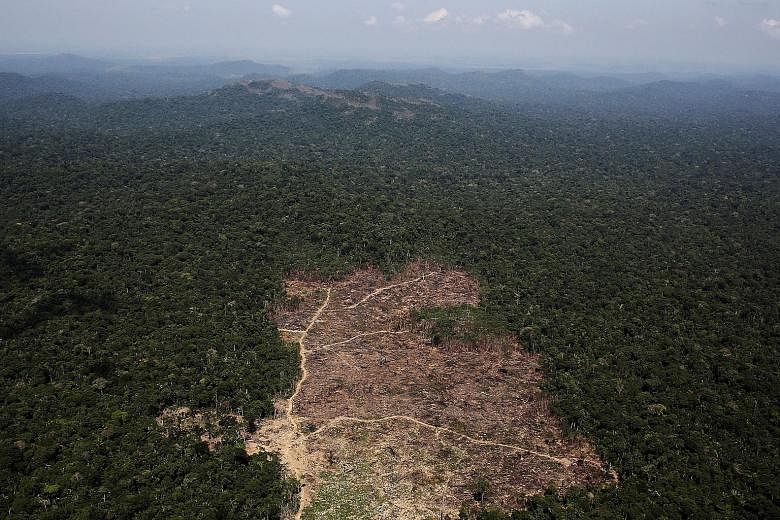MIAMI • Having a range of different plant and animal species helps guarantee the health of the Earth, but a study has suggested that biodiversity may be declining beyond safe levels.
On 58 per cent of the world's land surface, which is home to 71 per cent of the global population, "the level of biodiversity loss is substantial enough to question the ability of ecosystems to support human societies", said the report in the US journal Science.
Researchers at University College London (UCL) based their study on data from hundreds of international scientists, crunching 2.38 million records for more than 39,000 species at more than 18,000 sites in the world.
They sought to estimate how biodiversity has changed over time, particularly since humans arrived and built on land.
The areas most affected included grasslands, savannahs and shrublands, followed by many of the world's forests and woodlands, said the report.
Using a reference known as the Biodiversity Intactness Index (BII), which captures changes in species abundance, researchers said a safe limit of change is generally considered to be about a 10 per cent reduction in BII.
In other words, "species abundance within a given habitat is 90 per cent of its original value in the absence of human land use", said the report, which was released on Thursday. The study showed that global biodiversity has fallen below that threshold, to 84.6 per cent.
"This is the first time we've quantified the effect of habitat loss on biodiversity globally in such detail and we've found that across most of the world, biodiversity loss is no longer within the safe limit suggested by ecologists," said lead researcher Tim Newbold of UCL.
"In many parts of the world, we are approaching a situation where human intervention might be needed to sustain ecosystem function."
The research means ecosystems may be less able to withstand future challenges like the ongoing global warming, Dr Newbold added.
"We're entering a space where things become more uncertain, and we expect that things will be less resilient in the face of other changes," he said.
The biggest changes have been happening in the most heavily populated areas, raising concern about the potential impact on human health as well.
"It's worrying that land use has already pushed biodiversity below the level proposed as a safe limit," said co-author Andy Purvis of the Natural History Museum in London.
"Decision-makers worry a lot about economic recessions, but an ecological recession could have even worse consequences - and the biodiversity damage we've had means we're at risk of that happening," he added. "Until and unless we can bring biodiversity back up, we're playing ecological roulette."
AGENCE FRANCE-PRESSE, WASHINGTON POST

